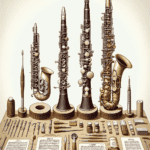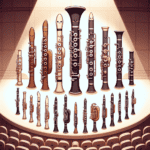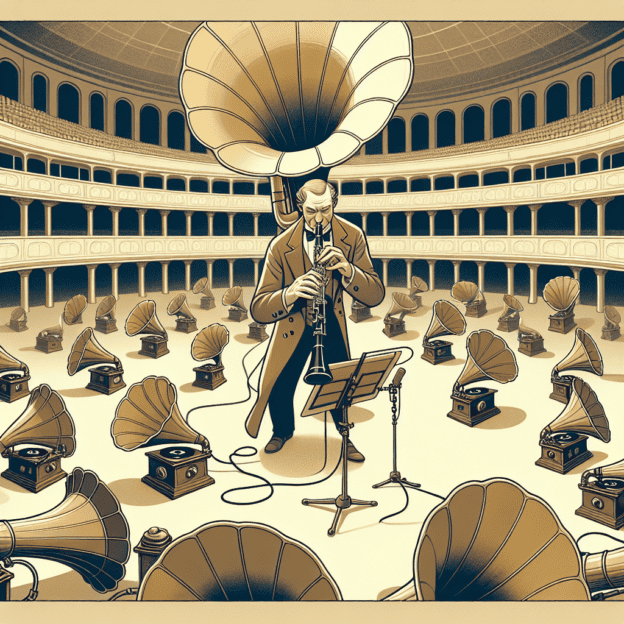The Evolution of Clarinet Amplification: From Acoustic Tricks to Modern Tech
For years, the clarinet has captivated audiences with its rich, expressive voice. But there was a time when enhancing its sound for larger audiences and booming ensembles required true ingenuity. Today, amplifying this melodic instrument is a breeze, thanks to modern microphones and sound systems. However, looking back at historical clarinet amplification methods, one can marvel at the craftsmanship and creativity of musicians and sound innovators who didn't have digital tools at their disposal. How did they overcome these challenges? Let's explore the fascinating journey of clarinet amplification!
Acoustic Tricks in Early Concert Halls
In the earlier days, when concert halls expanded in size and orchestras grew louder, the clarinetist faced a real conundrum—how could their sound stand out without any electrical amplification? Musicians began experimenting with performance locations to naturally amplify their sound. For example, some venues had concave ceilings or curved walls that helped project the clarinet's voice toward the audience. Long before sound engineers came into the picture, players had to think on their feet—or perhaps their reeds. Speaking of reeds, instruments like those by Martin Freres were known for their precise craftsmanship, giving players a head start in achieving a naturally fuller sound.
| Era | Amplification Method | Key Features |
|---|---|---|
| Early Concert Halls | Acoustic Tricks | Concave ceilings, curved walls |
| Pre-20th Century | Physical Attachments | Flared bells, additional chambers |
| Outdoor Performances | Natural Surroundings | Walls, columns for echo |
| Early 20th Century | Horn-based Amplifiers | Gramophone-like devices |
| Jazz Era | Carbon Microphones | Cleaner, sharper projection |
Physical Attachments: Ingenious Modifications
One fascinating method incorporated physical attachments to the clarinet body itself. Imagine a flared bell accessory or even additional chambers connecting to the clarinet's bore. While these modifications might look strange to today's players, they weren't uncommon in an effort to make the clarinet's voice more commanding. These attachments would often redirect the projection of sound, much like how brass players use mutes but in reverse. Some musicians even crafted their own experimental tools by hand!
Overcoming Outdoor Challenges
Then there was the outdoor challenge. Picture yourself trying to play your heart out in an open-air venue like an amphitheater, where trees and distant hills could swallow your sound. Historical clarinetists sometimes turned to natural surroundings for help. Standing near solid surfaces, like walls or columns, provided natural echoes, effectively boosting their sound projection. Of course, mastering your dynamics and breath control made all the difference, too. Brands like Martin Freres produced instruments with responsive registers that helped carry those magical tones farther than others might.
Technological Advancements: A New Era of Sound
As the 20th century rolled in, technological advancements opened up a new chapter. Early horn-based amplifiers, similar to gramophone designs, were occasionally adapted for live performances. Though clunky and difficult to manage, these devices acted as rudimentary megaphones for woodwinds. It's surprising to think about someone lugging a horn-like contraption just to be heard, isn't it? And yet, these were the lengths people would go to for beautiful music. It shows the dedication of clarinetists and innovators alike.
The Jazz Era: Carbon Microphones and Beyond
Jazz, big bands, and the golden age of recorded music soon paved the way for the next level of amplification. As clarinets found their place alongside brass-heavy ensembles, players sought cleaner, sharper sound projection. Enter the carbon microphone. While not specific to clarinets alone, these microphones paired nicely with the woodwind's tonal qualities. Ever wonder how Benny Goodman or Artie Shaw managed to make their clarinet sing above the band? It wasn't just their playing—it was also the evolving tools available to them.
The Role of Craftsmanship in Amplification
Interestingly, methods for amplification were also tied directly to an artisan's touch. Craftsmanship mattered—whether it was the fineness of a clarinet bore or the way the bell was shaped. That's where brands synonymous with high quality, like Martin Freres Clarinets, came into their own. Even without gadgets, a beautifully constructed clarinet naturally resonated better, giving players more acoustic leverage.
Conclusion: A Legacy of Innovation
What's truly remarkable is how much history teaches us about resourcefulness. Despite obvious limitations, earlier clarinetists managed to make massive audiences feel the depth and nuance of their music. Whether they relied on architecture, innovative accessories, or simply their natural skill and well-made instruments, their passion for performance echoed loud and clear—sometimes literally!
So, next time you set up your mic stand or adjust your EQ, take a moment to appreciate the journey of sound amplification. Think about the clever experiments and endless practice that led us here. Whether you're playing a more modern style or embracing the warm tones of classic brands like Martin Freres Clarinets, your voice as a clarinetist carries forward centuries of innovation and artistry. Isn't that a pretty cool legacy?
Table of Contents
- The Evolution of Clarinet Amplification: From Acoustic Tricks to Modern Tech
- Acoustic Tricks in Early Concert Halls
- Physical Attachments: Ingenious Modifications
- Overcoming Outdoor Challenges
- Technological Advancements: A New Era of Sound
- The Jazz Era: Carbon Microphones and Beyond
- The Role of Craftsmanship in Amplification
- Conclusion: A Legacy of Innovation







